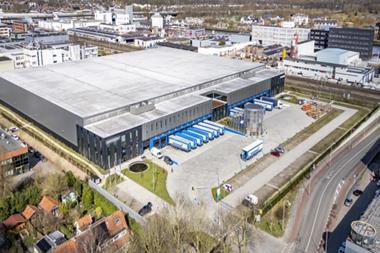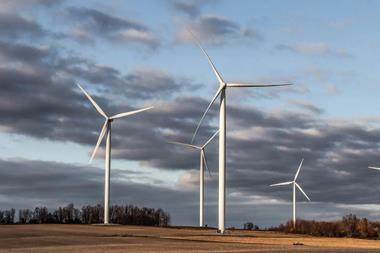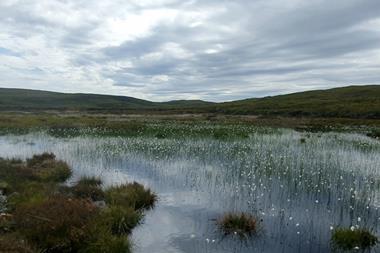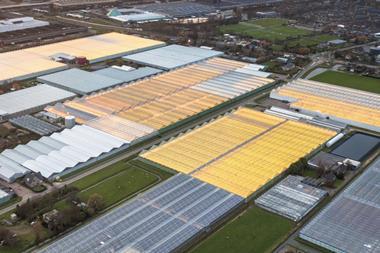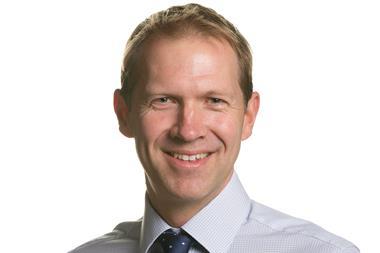Investors are homing in on forestry and timberland markets – but for different reasons. Florence Chong reports
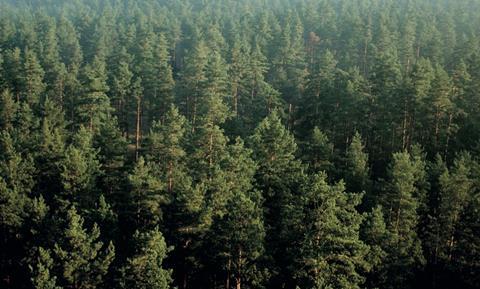
The forestry sector is witnessing a convergence of carbon capture and natural climate solutions. It is a collision of competing needs as the world seeks to substitute less climate-friendly materials with timber products.
Last year, JP Morgan Asset Management acquired Campbell Global, an owner of 1.7m acres of forest across the world, gaining access to timberland assets valued at US$5.3bn (€4.7bn), in 15 US states, New Zealand, Australia and Chile.
“Forests are well recognised as a natural solution to many of the world’s climate, biodiversity and social challenges,” says a JP Morgan AM spokesperson. “Increasingly, working forests sequester CO₂ from the atmosphere and are a natural solution for combatting greenhouse-gas emissions.” Forestry investments can provide investors with a fungible mechanism to address their carbon footprint.
Eric Cooperstrom, managing director of impact investing and natural capital solutions at Manulife Investment Management, says timberland investing now features more prominently as a sub-set of natural climate solutions. “No great leaps in technology are necessary to invest in a working forest, afforestation or a reforestation project, [yet] trees are seen as a leading technology to sequester carbon emissions.”
The changing forestry sector is starting to reshape the economics of forestry investing, moving from an industry primarily focused on harvesting logs to one revolving around the capture of carbon for offsets. This is leading to what observers believe could be a multi-billion-dollar carbon market.
According to the UN’s Principles for Responsible Investment, corporate demand for carbon removal and offsetting could be worth US$800bn annually for investors by 2050.
David Brand, CEO of New Forests, says: “The UN reports that over 40bn tonnes of greenhouse gases are emitted each year. Forestry and agricultural land use broadly could collectively reduce about 10bn tonnes of that. At a carbon price of, say, US$50/tonne, you are looking at a potential yearly cash flow of US$500bn across the land-use sector.
“We are not sure how the carbon market will evolve, and what the rules will be, but there is no question that this is going to be a significant economic issue that has to be understood by investors.”
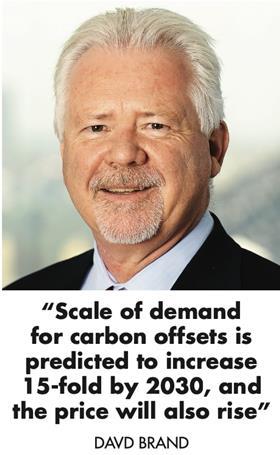
So far, New Forests has been running a traditional forestry investment approach, with any carbon credits treated as upside. As carbon credits become more valuable than the timber in trees, the industry may move to a carbon-driven regime in its management, Brand says.
“That is where things are going to evolve. The scale of demand for carbon offsets is predicted to increase 15-fold by 2030, and the [carbon] price will also rise. Currently, demand is much higher than supply, leading to rising prices.”
Tom Sarno, global head of timberland investment at Manulife Investment Management, says: “It is easy to predict that more of our business will come from new emerging values arising from climate initiatives. Some of our forest assets will benefit, and it is clear that is a growth area for timberland investment. Exactly how big it will get is hard to foresee.”
Sarno thinks this will depend on how societies and corporates value carbon, the cash value that it creates and where it trades. “These factors will influence owners to change their management regimes if there is enough incentive to do so financially,” he says.
Carbon prices in some markets have doubled in the past six months, hitting US$50/tonne in New Zealand, US$35 in Australia and US$16.50 in California. “This is causing significant change to the underlying economics of forestry investment,” Brand says. “The investment community will need to consider its approach to forestry valuation where assets are currently or potentially exposed to a carbon-price signal.
“Traditional forestry valuation looks at forward pricing, expected rates of timber production and the growth rate of the trees. With a carbon overlay, there is another cash flow and option value between timber production and carbon-offset production.
“But we need to understand the risk associated with forward carbon markets. This is different from risk associated with selling timber, because it is based on government or voluntary market policy settings. We may even have to use different discount rates for future carbon values versus the timber value.”
Cooperstrom says there is a sense that governments are acting too slowly to address climate issues, but over the past couple of years more private-sector firms have been adopted net-zero commitments.
“There is ever-increasing attention to the detail of exactly how we are going to meet those commitments,” Cooperstrom says. “What is the underlying science supporting these efforts? What are the available options in the near-to-medium term that are going to help companies achieve these goals?”
Manulife Investment Management’s timberland assets under management totalled US$11.2bn as of September 2021, making it the largest timberland manager in the world. Manulife insurance company and its US division John Hancock are looking at timberland to meet their climate-change mitigation goals.
In August, the insurer bought almost 90,000 acres of timberland in the US state of Maine. This was the first “carbon-first” investment on Manulife’s general account.
Cooperstrom says: “The intention there really was to invest for carbon value. We are currently establishing carbon projects on the Maine property, and we are pursuing third-party verification, validation and registration to ensure that the integrity of sequestration and carbon crediting is sound.
“We have also adopted a set of carbon principles that are aligned with the Taskforce on Scaling Voluntary Carbon Markets’ Core Carbon Principles to help ensure our carbon project activities are following best practice. Manulife then will have the option of selling and monetising the credits, or it can retire the credits and apply the carbon sequestration directly against its own carbon footprint.”
Gian Paolo Potsios, managing director of Timberland Investment Resources Europe (TIR), says: “In the past 12 to 18 months, we have seen renewed attention from corporates to the carbon footprint of their ESG portfolios. Dealing with their climate-change commitments is posing a sort of conundrum on corporates, and some are tapping into the carbon-credit market to try to offset their emissions.
“Others prefer not to enter this kind of trading. Instead, they are investing in forest ‘additionality’. They are saying: ‘I am emitting 100,000 tonnes of carbon each year, so I am going to invest in additional forest that will be able to capture that 100,000 tonnes of carbon over the lifetime of the investment.’ With other initiatives, that investment will help them achieve their net-zero goals.”
Asked how investors can reap the benefits of sequestration if trees are harvested on maturity, Potsios points to the concept of additionality. Forest managers cannot use existing forests to satisfy the definition of additionality, he says. They must establish new forests through afforestation or reforestation – or keep the trees in a plantation for five to 10 years longer than originally intended.
Industry experts say that investors demand strong, detailed data on carbon management – data that has to be independently validated by established certifying organisations. “There has been a move across the EU in the past year to make sure there are rules and regulations in place basically to prevent greenwashing,” Potsios says. “These regulations will require proof of actually achieving certain targets corporates have set for themselves.”
TIR, which manages US$1bn mainly in the US, is working on a fund that will encompass new approaches which enable environmental, social and governance obligations to be met while still delivering returns. This could mean allocating land to solar or wind energy generation, or having conservation easements in non-productive parts of a plantation.
Daan Oranje, co-managing partner for timberland at Stafford Capital Partners, says: “In one of our funds, almost half of the operating revenue is coming from carbon credits, and, across all funds, we have gone from having very little to carbon credits contributing around 0.5% of the yield.”
Demand for forest investment spawned several new funds in 2021, and some of these have experienced substantial oversubscription. Stafford raised a record US$695m for Stafford International Timberland Fund IX last year. TIR hopes to raise about US$300m for a new vehicle, having closed its second fund in 2021.
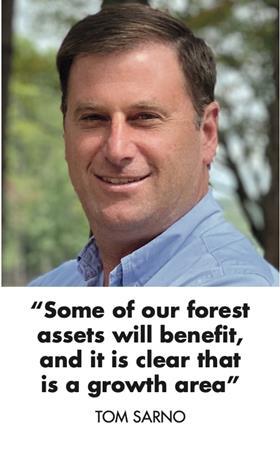
In Australia and New Zealand, New Forests has created a modest fund in partnership with the Japanese conglomerate Mitsui to establish greenfield forest plantations on degraded land that will produce Australian carbon credit units.
Its US-Forest Climate Solutions Fund (FCS) is raising capital and is expected to close in the first quarter of 2022. It will target timber and the California carbon-offset market. “FCS will knit together forestry and carbon-offset sales to generate higher returns for investors,” Brand says. “We have developed this strategy successfully to manage forests for our direct investment clients, and we will now use the approach with the new fund.”
At COP26 in November 2021, New Forests together with the UK, Norwegian and Finnish governments, launched the African Forestry Impact Platform, a US$500m vehicle to invest in sustainable forestry and land-based climate-change solutions.
All New Forests funds and separately-managed accounts are already selling carbon credits as a sideline. Brand says the cumulative value of carbon credits either sold, registered or in the project development process, is about US$500m across these funds.
Brett Himbury, former IFM Investors CEO and recently appointed chairman of Stafford Capital, says that, while he sees increasing interest from investors and bigger emitters in timberland funds for additional carbon credits, he continues to see interest from investors for the fundamentals of the sector. Himbury likens interest in timberland to that of infrastructure a decade ago, when he first started running IFM Investors.
Oranje says timberland investment is enjoying a thematic boost led by increased demand for sustainable products. “Supermarkets are moving to paper packaging, and the explosion in e-commerce has seen soaring demand for cardboard packaging,” he says. “House construction is also very strong in key markets.”
Oranje says Stafford has a different approach to other forestry managers. “Many of the assets are acquired through the secondary market,” he says. “We are buying fund positions from other limited partners in existing forest funds. We can work with in-place managers, see the underlying business, and underwrite that business.”
Stafford’s forestry assets are located in Australia, New Zealand, Latin America and North America valued at about US$2.5bn. “Our funds don’t own every single hectare of a timberland asset,” Oranje says. “Ownership typically ranges from 1% to 20%. In total, we participate in 4.4m hectares of timberlands around the world.”
Could using forests to generate carbon offset create tensions between owners of forest using the asset for traditional business and those using it for carbon trading?
Cooperstrom believes there is sufficient timberland supply to meet current demand, although attention to timberland’s value as a store of carbon and source of sustainable wood products is increasing.
“That is not to say there is not already an indication of competition between the traditional forestry investment model and those targeting carbon sequestration,” he says. “If we see a significant increase in the value of carbon, there are going to be repercussions for traditionally-managed timberlands.”






